Barcode label printers deliver sharp, scannable codes that stand up to real-world use in labs, warehouses, and production. These thermal transfer printers range from compact desktop models to rugged industrial systems built for high-volume throughput. Each is engineered for accuracy, ensuring barcodes remain clear and consistent across diverse label materials and applications. From tubes and slides to cartons and pallets, they provide reliable identification that lasts.
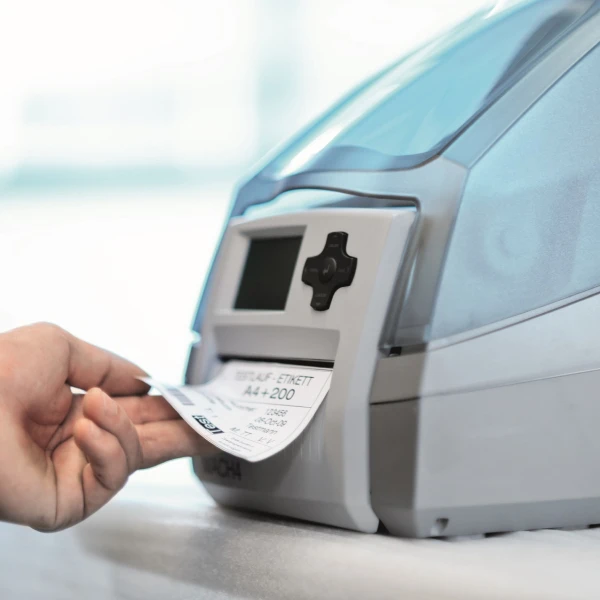
Label printers are engineered for precision, performance, and reliability. They combine advanced print resolution, speed, and design versatility to meet a wide range of identification and tracking requirements. Using thermal transfer printing technology, these printers deliver crisp, long-lasting images that resist abrasion, chemicals, and extreme temperatures. From compact desktop units to rugged industrial systems, every label printer is designed to ensure consistent, high-quality output across diverse materials and demanding environments.
High print resolution ensures barcodes and text remain scannable even at reduced label sizes. Most label printers offer 203 or 300 dpi options, while select models reach 600 dpi for fine graphics or micro text. Higher resolution supports small-format labeling for vials, electronics, and components where precision and image density are critical for reliable data capture.
Print speed measures how many inches of label a printer outputs per second. Faster speeds improve throughput in production environments but may slightly reduce print density depending on ribbon and material. Industrial label printers often exceed 10 ips, while desktop models typically operate between 4 and 8 ips, balancing performance with print quality for routine labeling tasks.
Duty cycle defines how consistently a label printer handles workload without premature wear. Desktop models are rated for moderate daily volume, while industrial units manage continuous, high-volume operation. Evaluating monthly label output helps match the printer’s mechanical design—motors, chassis, and drive components—to production requirements for long-term reliability and predictable maintenance schedules.
Most label printers rely on thermal transfer technology, where heat from the printhead bonds resin or wax-resin ink to the label surface. This method produces chemical- and abrasion-resistant images suitable for harsh environments. Direct thermal printing uses heat-sensitive paper and eliminates ribbons, but images can fade under light, moisture, or temperature exposure, limiting long-term durability.
Label and media capacity outlines the printer’s accepted roll diameter, core size, label width, and compatible media formats. Desktop printers typically support 5-inch rolls, while industrial units handle 8-inch or larger. Many label printers also accept fan-fold media for extended unattended operation, offering flexibility in label supply configuration and overall media management efficiency.
Not sure which label printer fits your needs? Fill out our quick form to get personalized guidance on the best match.
Label printers vary not only in the maximum label width they support, but also in their ability to handle different media constructions and roll formats. Most desktop label printers handle rolls up to 4–5 inches wide, suitable for sample tubes, asset tags, and product labels. Industrial label printers extend to 6–8 inches or more, supporting large-format pallet, compliance, or warehouse labels. Beyond width, the media type—continuous, die-cut, fan-fold, or tag stock—determines how the printer senses and advances each label.
Advanced thermal label printers use adjustable sensors to detect gaps, black marks, or perforations, allowing for flexible label shapes and materials. This matters when switching between paper-based media and durable synthetics like polyester, polypropylene, or polyimide, which are common in harsh environments. Each material requires specific print settings and ribbon pairings to maintain barcode contrast and edge definition.
Some label printers also accommodate specialty constructions such as high-temperature materials, tamper-evident films, or metallic face stocks. The printer’s internal path, roller design, and platen pressure determine whether these materials feed cleanly without curling or wrinkling. Matching the label width, media thickness, and sensor range to your printer ensures not just compatibility—but consistent, scannable results across every print run.
Most professional label printers use thermal transfer printing, which provides long-term durability for industrial, laboratory, and outdoor labeling. In this process, a ribbon coated with resin, wax, or a resin/wax blend transfers pigment onto the label through heat. The result is a permanent, crisp image capable of withstanding abrasion, chemical exposure, and temperature extremes. Among these formulations, resin ribbons deliver the most robust performance, fusing tightly to synthetics like polyester and polyimide—materials often chosen for equipment tracking, component labeling, and cryogenic identification.
Ribbon capacity defines how efficiently a label printer runs. Desktop label printers typically use ribbons up to about 110 meters long, which suits moderate daily printing. Industrial label printers support ribbons between 300 and 600 meters, enabling extended, unattended operation in 24/7 production settings. Fewer ribbon changes reduce downtime and maintain consistent print density over long runs.
While direct thermal label printers eliminate ribbons entirely, they use heat-reactive labels that can fade over time or darken under high temperatures. They’re ideal for short-term labels like shipping or retail use but not for applications demanding permanence. Thermal transfer label printers, particularly when paired with resin ribbons, provide the durability required for traceability, compliance, and high-performance environments. Selecting the right print method is ultimately about balancing print life, environmental exposure, and workflow continuity.
Precision is everything in barcode printing, and media sensing systems are at the heart of that precision. Label printers use reflective, transmissive, or dual sensors to detect gaps, notches, or black marks between labels. Proper alignment ensures that barcodes, text, and variable data print in the correct position on every label—critical for scan accuracy and compliance.
Higher-end thermal label printers feature movable or dual sensors that can be repositioned to match off-center or nonstandard media designs. This flexibility allows users to run multiple label types without recalibrating between batches. Auto-calibration routines automatically detect label dimensions, adjusting feed length and print origin without manual input.
Calibration also plays a role in maintaining print density and registration. Over time, mechanical components like platen rollers can develop slight variations, which calibration compensates for to keep prints centered. For advanced traceability systems, this precision ensures serialized barcodes, lot codes, or variable identifiers are properly positioned for automated scanning or vision inspection.
Operators should calibrate label printers whenever media type, width, or label construction changes. Doing so minimizes wasted material, ensures optimal print quality, and guarantees reliable barcode readability throughout production or storage.
The physical build of a label printer determines how well it withstands its environment. Desktop label printers prioritize compactness, using lightweight housings for office, lab, or benchtop use. Industrial label printers feature rigid metal chassis, reinforced mounts, and sealed covers to protect internal components from dust, vibration, and temperature fluctuations. These design differences directly influence print precision, mechanical stability, and longevity.
Chassis rigidity minimizes vibration that can cause printhead misalignment or uneven ribbon transfer. Metal construction also enhances heat dissipation, preventing thermal buildup during long print runs. In contrast, polymer covers—used in models like the cab SQUIX—provide transparency for easy media monitoring while still shielding consumables from debris. Both designs protect label stock and ribbons from contamination, a critical factor in maintaining print quality.
When selecting a label printer, consider environmental variables such as ambient temperature, humidity, and airborne particulates. High temperatures can soften adhesives or degrade direct thermal stock, while cold environments require adhesives formulated for low application temperatures. Matching the printer’s construction to its intended setting ensures consistent performance and reduces service interruptions in demanding production conditions.
Maintenance is essential to keeping label printers operating at peak efficiency. The printhead—a precision thermal element—must stay clean and properly tensioned to produce consistent heat transfer. Dust, adhesive residue, or paper fibers can build up over time, leading to faded images, voids, or streaks. Cleaning the printhead with isopropyl swabs or approved pads at each ribbon change significantly extends its lifespan.
In addition to cleaning, printhead pressure and alignment should be periodically checked to ensure even contact across the label width. Many industrial label printers offer self-diagnostic tools or counters that track printhead usage in inches printed, providing predictive maintenance alerts before failure occurs.
Other components, like the platen roller and ribbon drive, also require routine inspection. Worn rollers can cause slippage or uneven feeding, especially in high-speed or high-temperature applications. Keeping spare consumables on hand—printheads, rollers, fuses—helps reduce downtime and maintain operational continuity.
Long-term, proper maintenance translates into consistent barcode quality and lower total cost of ownership. Label printers built for easy access and field-replaceable parts simplify service and minimize disruption, which is especially critical in automated labeling systems.
Firmware and software compatibility determine how effectively label printers integrate into labeling ecosystems. Most thermal label printers use standard command languages—such as ZPL, DPL, or SBPL—which makes them interoperable across brands and simplifies deployment. Firmware compatibility ensures older label templates remain usable even after upgrading hardware, preserving layout consistency and reducing the need for redesign.
Label design and management software play an equally important role. Programs like BarTender and NiceLabel enable centralized control of label formats, variable data, serialization, and compliance templates. They integrate with ERP, MES, or LIMS systems, allowing label printers to automatically pull production data, lot numbers, or tracking codes at print time.
Advanced setups also leverage print server environments or cloud-managed printer fleets, enabling remote configuration and monitoring across facilities. Firmware updates can be pushed automatically to ensure consistent performance and security. Together, flexible firmware and powerful software support make a labeling system scalable, compliant, and adaptable to new requirements over time.
Desktop label printers are built for workstations, labs, offices or moderately demanding production spaces. They bring printing power optimized for shorter runs, tighter footprints, and simpler media handling. While they don’t match the continuous-duty toughness of industrial models, they excel in settings where flexibility, ease of use and affordability matter. In this section we’ll cover what makes a printer truly “desktop,” how to select the right one, and what features differentiate the best from merely good.
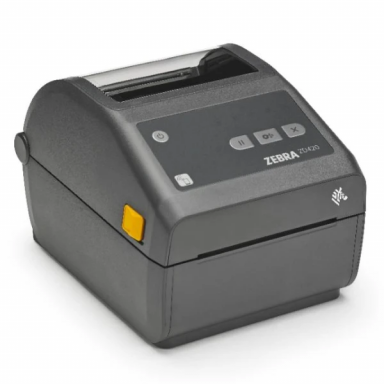
Zebra’s ZD Series combines ease of use with dependable performance, offering models tailored to different needs. The ZD421 provides reliable desktop printing with a compact footprint, while the ZD621 adds faster processing, expanded connectivity, and a full-color display for more demanding workflows.
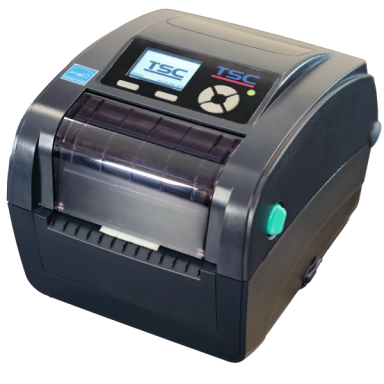
The TC Series from TSC balances durability with everyday usability. Built with a double-wall construction, these printers are sturdier than most in their class, making them suitable for busy environments where reliability is essential. Compact and efficient, they are a popular choice for small to medium-scale labeling tasks.
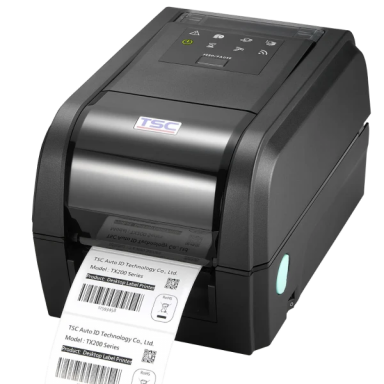
The TX Series offers higher speed and flexibility than entry-level desktop printers. With multiple dpi options and faster throughput, the TX is designed for applications that require both precision and efficiency. Its larger ribbon capacity and advanced connectivity make it a good step up for users who need more than basic desktop performance.
Desktop label printers are characterized by their compact chassis (bench or shelf mount), moderate duty cycles (often up to a few thousand labels per day), print widths typically in the 4″ range (though 2″ or 6″ exist), and media roll capacities designed for convenience rather than industrial scale. They often unload with user-friendly covers, minimal tool access, and standard connectors (USB, possibly Ethernet/WiFi). For example, many desktop models handle media rolls ~5″ outside diameter and ribbon lengths ~110 m—smaller than many industrial models. Choosing a desktop label printer means you’re prioritizing convenience and flexibility over heavy-duty throughput.
A well-planned workstation for a desktop barcode label printer ensures smooth operations, fewer mistakes, and quicker changeovers. First, consider physical placement: a typical 4″-wide desktop label printer—such as the TSC TC310, which supports roll media up to ~5″ outside diameter on 1″ or 1.5″ cores—is compact compared to industrial machines, but still requires sufficient clearance for loading labels, ribbons and for routing cables. Make sure the printer sits on a stable bench or shelf that brings it to a comfortable working height, with clear space for the operator to open the top cover, reach inside, swap rolls and ribbons without awkward posture.
Next, plan for auxiliary equipment and workflow: even though many desktop printers are “stand-alone” in the sense that they don’t need extra modules, you should still consider what else sits on that bench. For example, in lab or blood-collection settings where you might use a “scan-one-print-one” replicator system (scan an existing sample label and immediately print a duplicate) you may need a barcode scanner, a small PC or terminal, and perhaps a label re-print queue. In such cases the bench needs space not just for the printer, but for the scanner, any lightbox or inspection station, and clear cable paths for USB or Ethernet.
Don’t forget consumables and organization: clearly designate a spot for spare media rolls, ribbon cores, cleaning supplies (printhead cleaner, lint-free swabs), and tools (e.g., small screwdriver if head adjustment is needed). This keeps changeovers fast and avoids downtime. Also plan for network or power connectivity: ideally the printer is connected via Ethernet or WiFi to your label software, with USB fallback; power outlets should be readily accessible, and cables routed so that the printer lid can open without snagging.
Finally, ergonomics and workflow matter: place the printer such that the printed label exits in a direction aligned with your application station (for example beside a pipette rack, shipping scale or inventory bin) so the operator can grab the label and apply it without turning around. If you anticipate frequent label changes or multiple operators, ensure the bench has enough workspace for two users to swap rolls at the same time, or for the printer to be reached easily from both sides. Even though a desktop printer often does just the printer job, by optimizing the workstation layout you reduce errors, speed up throughput and support the high-quality labeling standards your target audience demands.
Desktop barcode label printers are designed around smaller, more manageable media supplies, which is part of what makes them ideal for compact workstations. Most models accommodate rolls up to about 5 inches in outer diameter on 1- or 1.5-inch cores, and ribbons roughly 110 meters in length on ½-inch cores. This smaller format keeps the printer footprint low and makes roll changes quick, but it also means operators will need to reload more frequently compared to the 300-meter ribbons and 8-inch label rolls common in industrial printers. Planning for that trade-off—speed of changeover versus continuous runtime—is central to desktop workflow efficiency.
For media type, nearly all desktop printer models can print on paper and synthetic labels, including polypropylene and polyester, as well as continuous, die-cut, fan-fold, and black-mark formats. The right choice depends on the application: paper is economical for short-term or shipping labels, while synthetics withstand abrasion, moisture, and chemicals—important for labware, asset, or compliance labeling. Many printers can also handle specialized materials like cryogenic labels, wristbands, or tag stock, but the material’s thickness and flexibility must fall within the printer’s specified range.
When it comes to ribbons, the selection directly affects print durability and legibility. Wax ribbons are suited for general-purpose paper labels and provide crisp black text at high speeds. Wax-resin blends offer smudge resistance for moderate handling and exposure, while pure resin ribbons deliver the highest durability for synthetics and environments with heat, solvents, or friction. Because desktop printers run at lower printhead pressures than industrial models, it’s important to match the ribbon formulation to the label face stock for full ink transfer—especially on glossy or film surfaces.
Also worth noting is ribbon-to-media compatibility: the ribbon width should slightly exceed the label width to protect the printhead from abrasion. Using narrower ribbons or mismatched materials can leave unprotected print elements exposed, shortening printhead life. For frequent media changes, quick-swap ribbon paths and color-coded guides (features common on desktop printers like Zebra’s ZD and TSC’s TC series) can save time and reduce setup errors.
Finally, pay attention to environmental and storage factors. Desktop printers often live in shared lab or office spaces where temperature and humidity fluctuate more than in production environments. Labels and ribbons should be stored in sealed packaging and acclimated before use to prevent curling, static buildup, or moisture-related adhesion issues. Consistent conditions, paired with the right ribbon and media pairing, ensure sharp, durable print output even from compact desktop units.
Connectivity and integration are what make a desktop label printer truly functional within a broader labeling workflow. Most modern desktop printers ship with USB as standard, which covers straightforward plug-and-play setups for local workstations. However, many operations—especially in laboratories, production cells, and logistics environments—benefit from Ethernet, Wi-Fi, or Bluetooth connections. Ethernet allows centralized printer management across multiple stations, while wireless options enable flexible bench setups where cabling is impractical or cluttered. Choosing a model with the right combination of interfaces prevents costly workarounds later, especially when your labeling software or devices change.
Firmware and driver compatibility are equally important. Desktop printers often serve in mixed-device fleets or must replace older units without interrupting workflows. To simplify transitions, many models support emulations like ZPL, EPL, or SBPL, allowing them to mimic the command languages of other manufacturers’ printers. This cross-compatibility lets organizations standardize templates and print jobs across different printer lines, even in regulated settings like healthcare or manufacturing, where label consistency is critical.
For labs and quality-controlled facilities, it’s worth confirming whether the printer supports firmware version locking or centralized update management. Maintaining consistent firmware across all devices helps prevent discrepancies in barcode rendering or media calibration that can arise after automatic updates. In higher-volume environments, pairing printers with management tools—such as Zebra Printer Setup Utilities or SATO’s All-In-One Utility—can further streamline configuration, monitor printhead health, and push updates remotely.
Integration with label design and data management software is another key consideration. Programs like BarTender and Loftware can send variable data to desktop printers for sample tracking, inventory labeling, or compliance identifiers. When connected through a networked system, these printers can pull serialized data, replicate templates, or even trigger automated print jobs from scanners or other input devices. In some setups—such as “scan-one-print-one” systems used in blood labeling or specimen processing—the printer communicates directly with a scanner or middleware application to duplicate a label instantly. Ensuring that your desktop printer supports these integrations (via USB host ports or compatible APIs) allows it to scale beyond simple label output into a connected, responsive tool within a data-driven workflow.
Industrial label printers are built for manufacturing lines, warehouses, and other demanding production environments. They’re engineered for endurance—handling large media rolls, long print runs, and continuous use without sacrificing print quality. These machines prioritize durability, consistency, and uptime, making them the backbone of high-volume labeling operations. While they take up more space and require a higher initial investment, they deliver unmatched reliability and integration potential for facilities that depend on labeling as part of their production flow.
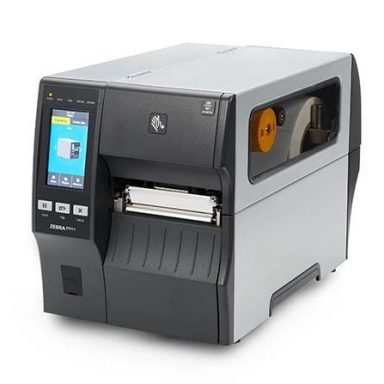
The ZT400 Series delivers a balance of performance, reliability, and flexibility for industrial environments. The ZT411 supports labels up to 4 inches wide, while the ZT421 extends that capacity to 6 inches, both offering fast print speeds and multiple connectivity options. These models are widely adopted for logistics and manufacturing.
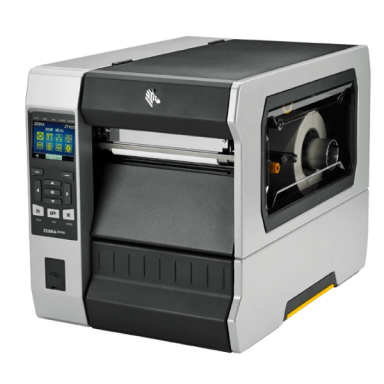
The ZT610 is part of Zebra’s premium ZT600 line, designed for mission-critical operations. With ultra-rugged construction and advanced electronics, it offers precise imaging at higher resolutions, making it suitable for tiny barcodes and compliance labeling. It excels in environments that require 24/7 performance with minimal downtime.
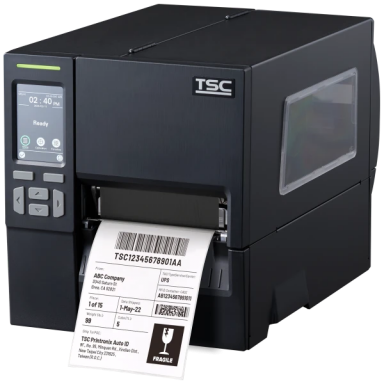
The MB Series is TSC’s compact industrial line, providing robust performance in a smaller footprint. It supports long ribbon lengths, fast throughput, and simple integration, making it a cost-effective choice for manufacturers and logistics providers. Its blend of industrial features and affordability makes it one of TSC’s most popular industrial models.
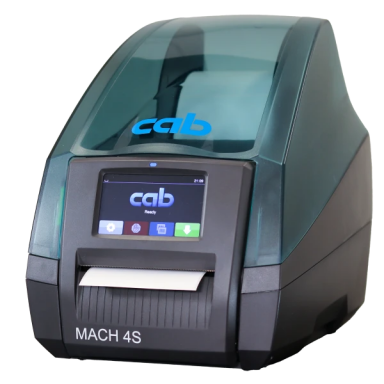
The MACH 4S combines compact design with industrial-grade reliability. With a full-color touchscreen, metal housing, and multiple print resolutions, it is ideal for production environments that need flexibility in a smaller format. It bridges the gap between desktop convenience and industrial durability.
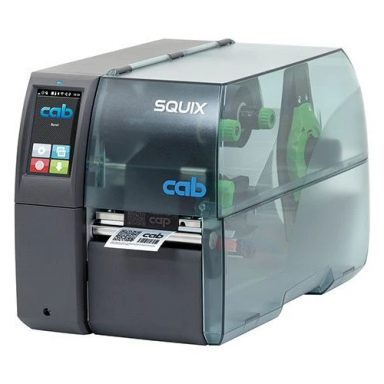
The SQUIX is cab’s flagship industrial printer line, known for precision, speed, and adaptability. Available in multiple widths and dpi options, it handles everything from small lab labels to wide industrial tags. With advanced connectivity and automation readiness, the SQUIX is built to integrate seamlessly into demanding workflows.
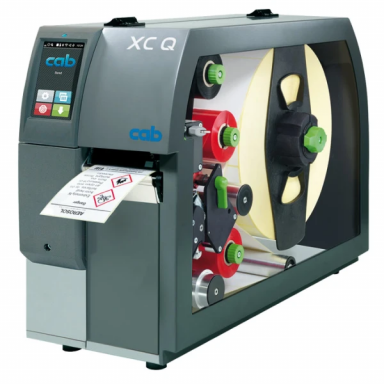
The XC Q is a two-color thermal transfer printer engineered for applications such as GHS chemical labeling. It prints with two ribbons in a single pass, combining durability with clear hazard communication. This capability makes it an efficient solution for industries that require compliance-ready, full-label output directly from one device.
Industrial barcode label printers are built for continuous, high-volume operation in demanding environments such as manufacturing lines, warehouses, and logistics centers. While desktop printers focus on compact design and easy changeovers, industrial printers are engineered for endurance, speed, and precision under constant use. Most feature metal or reinforced polymer housings, large media capacities, and durable mechanical assemblies that can handle tens of thousands of labels per day without drift or downtime.
Typical print widths extend from 4 to 6 inches, with some models reaching up to 8 inches for pallet and compliance labeling. Print speeds often exceed 10–14 inches per second, enabling efficient production throughput even when paired with high-density 300- or 600-dpi printheads. Their internal mechanisms are designed for precise tension control and alignment across long print runs, which minimizes waste and maintains barcode readability—critical in automotive, electronic, and healthcare traceability systems.
In short, an industrial label printer is defined not only by its physical robustness but by its duty cycle—the ability to run continuously, often 24/7, while maintaining consistent quality and printhead performance. These machines are the backbone of automated and high-throughput labeling operations, where downtime and reprints carry real production costs.
Industrial label printers are designed to sustain long, uninterrupted print runs with minimal operator intervention. Their mechanical assemblies—heavy-duty print engines, metal frames, and high-torque motors—are built to maintain alignment and print consistency even after thousands of labels in a single shift. This durability allows them to support 24/7 operation, where downtime directly affects production output or shipping schedules.
One of the biggest distinctions from desktop units is media capacity. Industrial printers typically accept label rolls up to 8 inches in outer diameter on 3-inch cores, along with ribbons reaching 450 to 600 meters in length. Fewer media changes mean higher throughput and less operator oversight, which is essential in automated or fast-paced environments. These printers are also equipped with precise tension control and media sensors to maintain registration accuracy over long runs—helping ensure that even small barcodes stay scannable at high speeds.
In many facilities, industrial printers are integrated into production lines or warehouse automation systems, where labels are printed and applied in sequence with scanning or verification. Some units include built-in peel-and-present or rewind mechanisms, and a few support add-on modules like dual printheads or RFID encoding for specific compliance needs. While such features can be valuable, they’re typically secondary to the core purpose: producing large volumes of durable, accurately printed labels without interruptions.
Ultimately, an industrial printer’s value lies in its ability to combine speed, reliability, and longevity—supporting continuous production cycles where every label must meet exact standards of readability and placement accuracy.
Industrial barcode label printers are defined by the strength of their chassis—the rigid structural frame that supports every moving component. Unlike the molded housings typical of desktop printers, an industrial printer’s chassis is usually fabricated from metal or reinforced alloy, providing stability that prevents vibration and mechanical drift during continuous operation. This stability translates directly into print precision, keeping barcodes sharp and properly aligned even after millions of cycles.
The outer cover plays an equally important role in both protection and usability. On models like the Zebra ZT Series, heavy-gauge metal side panels and doors shield the print mechanism, label material, and ribbon path from dust, debris, and incidental impact—ideal for warehouse and production environments. Others, such as the cab SQUIX, use impact-resistant polymer covers that still provide full enclosure but offer slightly lighter handling and easier visibility into the print area. Regardless of material, these covers serve a practical purpose: protecting consumables from contamination while allowing quick access for loading and maintenance.
Every aspect of an industrial printer’s construction supports longevity and serviceability. Printheads, platen rollers, and drive assemblies are typically designed for field replacement with minimal tools, and access panels are wide enough for easy threading of new media or ribbons. The chassis is engineered to withstand repeated roll changes, heavy use, and even minor operator error without deforming or misaligning the print path.
Thermal management and internal airflow are also critical. Industrial printers often run in warm factory settings, so their power supplies, stepper motors, and control boards are mounted to dissipate heat effectively. Combined with rigid frame geometry, these design choices prevent performance drift during high-speed or high-temperature operation.
Together, the reinforced chassis and protective covers define the industrial class: not simply larger or faster than desktops, but purpose-built for environments where dust, motion, and continuous use are expected. They preserve print accuracy, protect consumables, and allow years of reliable operation even under constant demand.
One of the biggest advantages of industrial barcode label printers is their ability to handle larger rolls, longer ribbons, and more varied materials without constant reloading. The rigid chassis and wide internal frame give these printers room for full-size industrial supplies—typically label rolls up to 8 inches in outer diameter on 3-inch cores, paired with ribbons ranging from 450 to 600 meters in length. This expanded capacity significantly reduces downtime in high-throughput environments and ensures smoother operation when integrated into automated lines or print-and-apply systems.
Media handling is engineered for both precision and speed. Reinforced media paths maintain consistent tension across long print runs, preventing skew or drift even at speeds of 10–14 inches per second. Adjustable guides and dual sensor systems detect label gaps, black marks, or notches with high accuracy, which helps preserve registration over continuous operation. These design details are especially valuable for barcodes that must remain perfectly positioned—such as serialized or compliance labels that are later verified by scanners or vision systems.
Industrial printers also provide greater flexibility in label formats. They can accommodate continuous, die-cut, fan-fold, and tag stock, as well as thicker or specialty materials used in harsh environments—like polyester, polyimide, or metallic films. Many models offer built-in or optional rewinders, peelers, or cutters, allowing operators to tailor the printer to their workflow. This adaptability makes it possible to use one printer across multiple production lines or label types, without constant hardware swaps.
The protective covers further enhance media reliability. Fully enclosed compartments shield label rolls and ribbons from dust and airborne debris that can cause print defects or adhesive contamination. On printers like the Zebra ZT Series, the metal door closes flush against the chassis to keep the print area sealed during operation, while the cab SQUIX’s transparent polymer cover offers visibility into media usage and quick identification of when a roll needs replacing. These design details ensure both protection and accessibility—critical for minimizing stoppages in continuous-duty environments.
In short, the media-handling system in an industrial printer isn’t just larger—it’s engineered for control, consistency, and protection, supporting high-volume label production with the precision needed for automated workflows and demanding quality standards.
Industrial barcode label printers are designed to operate as part of larger, connected systems—not just as stand-alone devices. Where desktop printers usually connect through USB or Wi-Fi for local use, industrial models prioritize networked and enterprise-grade communication. Ethernet is standard across nearly all modern industrial printers, often with options for dual network ports, serial connections, and wireless modules to support flexible installations across large facilities. This allows printers to live anywhere on the production floor while remaining fully accessible to management systems, print servers, or label software.
Integration with enterprise resource planning (ERP) or warehouse management systems (WMS) is a defining feature of the industrial class. These printers can receive print jobs automatically from production, inventory, or shipping workflows, converting variable data directly into serialized barcodes and compliance labels. Many facilities run multiple printers in parallel or in a “load-balanced” setup, where networked units share print queues for redundancy and throughput. This connectivity ensures that labeling keeps pace with manufacturing or logistics demands, even during peak output.
From a software standpoint, industrial printers support a wide range of printer control languages—ZPL, EPL, SBPL, DPL, and others—making them easy to integrate or replace within existing fleets. Firmware emulation capabilities allow one brand’s industrial printer to replicate another’s command set, minimizing template redesign and retraining. Management utilities, such as Zebra’s Printer Setup Utilities or cab’s firmware manager, enable centralized monitoring of printhead health, error states, and media usage—reducing downtime through predictive maintenance.
Hardware integration is also common. Industrial printers often interface directly with scanners, weigh scales, conveyors, and applicators, forming part of a semi- or fully-automated labeling cell. In manufacturing, a printer might be triggered by a PLC signal to print a serialized label the instant a part reaches a station. In logistics or blood processing, systems sometimes use “scan-one-print-one” logic—scanning an existing barcode and instantly producing a matching label. Some industrial models support GPIO interfaces or USB host ports for this kind of direct device-to-device communication, eliminating the need for a PC at each station.
Finally, while features like RFID encoding or advanced verification modules exist, they’re typically optional add-ons rather than defining traits. The real value of industrial connectivity lies in reliability, data synchronization, and control—ensuring every label printed on the line corresponds exactly to the data driving production, inventory, or compliance workflows.
Not sure which printer fits your workflow? Answer a few quick questions and our team will follow up with expert recommendations tailored to your needs.
Barcode label printers produce precise, durable barcodes instantly, supporting variable data and on-demand workflows. Using thermal transfer printing with resin ribbons, they generate images that resist chemicals, abrasion, and temperature exposure. On-demand barcode printing ensures accuracy, flexibility, and long-term readability across laboratory, manufacturing, and logistics environments where dependable identification is essential.
Selecting the correct barcode symbology determines how efficiently data can be stored, printed, and scanned. Linear barcodes like Code 128 handle alphanumeric sequences, while Data Matrix and QR formats encode more data in smaller spaces. Matching symbology to your data and scanner capability ensures consistency across packaging, laboratory, and manufacturing identification systems.
Print precision depends on accurate dot placement and uniform ribbon transfer. Misalignment, excess heat, or label drift can cause bars to blur or fill in, compromising readability. Regular calibration, clean printheads, and compatible label materials maintain fine bar edges and stable image density, ensuring scannable barcodes even at small sizes or high print speeds.
Reliable scan performance requires balanced contrast, properly sized quiet zones, and verified bar width ratios. Thermal transfer printing with resin ribbons maintains dark, high-opacity bars that scanners recognize quickly, even on curved or reflective surfaces. Routine verification against ISO standards helps maintain accuracy, preventing costly errors in automated tracking and data capture processes.
Successful barcode scanning depends on achieving strong contrast and crisp line edges during printing. Barcode label printers using thermal transfer technology create the most durable and legible results because the resin ribbon produces an opaque, carbon-based image with high optical density.
Proper heat and pressure settings ensure clean, distinct transitions between bars and spaces. Too much heat causes the ink to spread and fill narrow spaces, while too little produces faint, incomplete lines. Label material also plays a major role: glossy or semi-gloss surfaces reflect light unevenly, while matte-coated films provide a uniform base that enhances scanner readability. When printing barcodes on-demand, maintaining consistent contrast across different batches prevents scan inconsistencies in automated systems.
Routine test prints and verification scans help confirm that density, reflectance, and edge definition remain within specification, ensuring long-term readability and compliance with industry standards.
Barcode label printers are defined by their printhead resolution, usually measured in dots per inch (dpi). Higher resolutions—300 or 600 dpi—enable printing of compact, data-dense barcodes such as Data Matrix or QR codes without distortion.
For larger linear barcodes like Code 128, 203 dpi is often sufficient. The optimal barcode size depends on both the printer’s resolution and the scanner’s optical capability. When printing barcodes on-demand, resizing codes to match available resolution ensures accurate reproduction of bar width ratios and module size. At high print speeds, the printer must precisely synchronize ribbon transfer and media movement to avoid elongation or smearing. Calibration between label design software and printer driver settings guarantees consistent scaling across print runs.
Choosing the right balance between resolution, print speed, and barcode size ensures that every label—whether for labware, assets, or packaging—remains crisp, legible, and scannable in production environments.
Print orientation and placement strongly influence barcode readability and durability. Most barcode label printers perform best when barcodes are printed parallel to the printhead’s movement, known as the “picket fence” orientation, which minimizes edge jagging and maintains consistent bar width.
Printing perpendicular to the movement path (“ladder”) increases the risk of uneven edges or pixel stepping, especially at lower resolutions. When printing barcodes on-demand for curved or irregular surfaces—such as tubes, bottles, or cable tags—placement becomes equally important. Barcodes should sit on the flattest available area and follow the correct orientation for the scanner’s line of sight.
Avoid label folds, seams, and textured areas that can distort reflectivity or stretch printed elements. Consistent placement across identical products streamlines scanning in automated systems and minimizes operator error. Proper orientation and label alignment during print and application directly translate to faster, more reliable reads throughout the supply chain or laboratory process.
Verification confirms that printed barcodes meet ISO and ANSI quality standards before deployment. Dedicated barcode verifiers analyze parameters such as symbol contrast, edge determination, modulation, and decodability.
These measurements reflect how a scanner interprets the barcode, not just how it appears visually. For facilities printing barcodes on-demand, verification ensures every label produced by barcode label printers meets performance thresholds for automated identification systems.
Routine verification identifies drift in print quality caused by worn printheads, temperature variation, or media changes. By catching issues early, operators prevent unreadable or misgraded labels that could disrupt logistics or laboratory workflows.
Integrating verification data into quality management systems provides traceability across batches, helping document compliance for regulated industries like medical device manufacturing or blood labeling. Reliable read performance depends not only on printing accuracy but also on continuous validation under real-world conditions.
Barcode label printers enable real-time generation of serialized and variable data, essential for traceability in manufacturing, laboratory, and logistics environments. When printing barcodes on-demand, label design software such as BarTender or Loftware integrates directly with databases, ensuring each printed code matches a specific record or asset ID.
This connection eliminates manual input errors and allows automatic updates of sequences or lot numbers. Serialized barcodes support item-level tracking, enabling every product, sample, or container to maintain a unique digital identity. Consistent data synchronization ensures continuity between printed and digital records during audits, production runs, or inventory cycles.
For industries requiring precise traceability—such as pharmaceuticals, biobanking, or electronics—on-demand serialization provides flexibility without compromising data accuracy. Combined with durable label materials and verified print quality, it establishes a complete, closed-loop identification system that scales efficiently with operational demand.
Barcode generation software transforms raw data into printable barcode formats compatible with on-demand label printers. Systems such as BarTender and Loftware connect directly to internal databases, ERP systems, or laboratory information management systems (LIMS) to pull live data into label templates. These templates define barcode symbologies, field positions, and variable data rules, ensuring every printed label matches a validated record. When printing barcodes on-demand, this integration eliminates manual entry, reduces human error, and guarantees synchronization between digital and physical assets.
Advanced barcode label printers interpret printer command languages like ZPL or TSPL to render the barcode image precisely as defined in the software. The printer receives serialized or variable data in real time, applying it to each label without stopping production. Operators can configure triggers—such as scanning a work order or completing a batch step—to automatically generate and print the correct barcode set.
Barcode generation software also supports dynamic formatting, where symbology or content changes automatically based on product type, location, or regulatory requirement. This flexibility allows organizations to maintain one master template instead of dozens of static designs. Together, database integration, software automation, and precision printing ensure that every barcode produced on-demand is accurate, traceable, and fully aligned with enterprise data systems.
Label printers perform best when matched with compatible materials and accessories. The right labels, ribbons, and scanners ensure every barcode prints cleanly, scans reliably, and withstands its environment. Using mismatched supplies can cause print defects, fading, or adhesive failure. Selecting high-quality consumables designed for thermal transfer printing protects both your investment and the consistency of your labeling system.
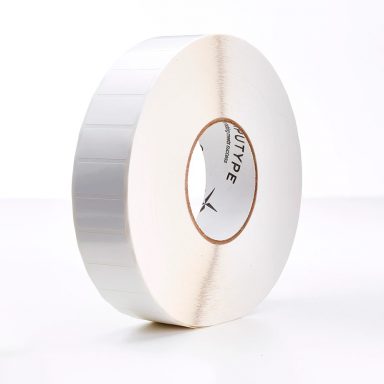
Thermal transfer labels are available in paper, polyester, polypropylene, and specialty films. Each responds differently to heat, pressure, and environmental stress. Choosing the right label material for your application—especially in harsh or chemical settings—ensures lasting adhesion, durable print quality, and consistent scanning performance throughout the product’s life cycle.
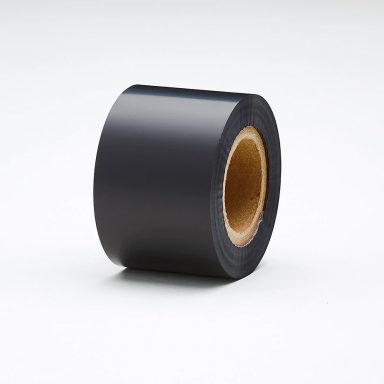
Resin ribbons deliver the most durable print images for demanding conditions like autoclaving, UV exposure, or chemical contact. Wax and wax/resin blends are suitable for less critical uses. Matching ribbon formulation to the label surface ensures proper ink transfer, sharp barcodes, and protection against abrasion, smudging, or chemical damage during use.
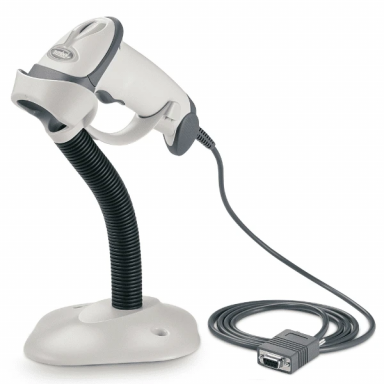
High-quality barcode scanners complete the labeling system, verifying readability and supporting process automation. Scanner compatibility depends on barcode type, contrast, and print resolution. Selecting a scanner designed for your symbology and environment—such as 2D imaging or rugged handheld models—ensures that every label scans successfully.
Thermal transfer printers require compatible label coatings to ensure clean ink transfer, durable images, and consistent print quality.
A mismatch between adhesive tack, liner strength, and printer mechanics can cause labels to peel incorrectly, stick inside the printer, or fail to release smoothly.
Surface chemistry affects image quality; pair ribbons and face stocks engineered for adhesion to maintain sharp, long-lasting barcodes.
Resin ribbons form heat-cured images that resist solvents, abrasion, and temperature extremes in industrial and laboratory conditions.
Routine label printer maintenance protects print quality, extends printhead life, and ensures consistent barcode readability. Dust, heat, and ribbon residue can degrade components over time, especially in high-volume or industrial environments. Regular cleaning, calibration, and inspection prevent downtime and costly repairs—keeping every barcode label printer operating at peak precision and efficiency.
Clean the printhead with approved isopropanol wipes after every ribbon or label roll change. Removing adhesive buildup and dust prevents image streaking, premature wear, and uneven heat transfer. Never use abrasive tools or sharp objects, as they can damage the heating elements and permanently affect print resolution.
Inspect and clean the media path regularly to remove label liner debris, dust, or ribbon fragments. Contamination in the feed path can cause misfeeds or wrinkled prints. Keeping rollers and guides clear helps labels track evenly through the printer, maintaining accurate registration and reliable barcode placement.
Frequent calibration ensures accurate label detection and print placement. Run auto-calibration whenever switching label sizes or materials. Proper alignment between sensors, rollers, and print media guarantees that barcodes, text, and graphics print within defined margins, reducing wasted labels and ensuring scan-ready output every time.
Inspect rollers for grooves or adhesive buildup. Check for flat spots or uneven texture monthly and replace as needed to maintain even label tension.
Dust or adhesive residue on sensors can cause media errors. Cleaning and recalibrating keeps printers detecting labels correctly and prevents wasted stock.
The right label and ribbon combinations not only improve print quality but also minimize abrasion and residue on the printhead and rollers.

Label printer performance depends on the right balance of hardware, ribbons, and label materials. This FAQ covers the most common issues users face when printing barcodes on-demand—from faint images to peeling labels—and explains how to resolve them. Learn how proper compatibility and calibration ensure reliable, durable barcode label printing.
Light or faint prints usually indicate a mismatch between ribbon and label material or insufficient print heat. Increase the print darkness slightly and verify that you’re using a compatible ribbon—especially if printing on synthetic labels that require higher transfer energy. Resin ribbons generally need more heat than wax or wax/resin blends.
Smearing occurs when the ribbon formulation doesn’t bond to the label surface. Paper labels and uncoated films often need wax or wax/resin blends, while synthetics and harsh environments require full resin ribbons. Verify that the ribbon and label face stock are chemically compatible, and lower print speed slightly to allow the ink to transfer cleanly and cure.
Blank spaces across the print can result from a dirty or damaged printhead, or incorrect media calibration. Clean the printhead carefully with isopropanol wipes and run the calibration routine to ensure the printer correctly detects label gaps or marks. Persistent missing lines may indicate a failed print element and require printhead replacement.
Even barcodes that look sharp to the eye can fail under a scanner if contrast or edge definition is poor. Check that the ribbon color contrasts strongly with the label, and that print darkness isn’t so high it causes bar bleeding. Maintaining consistent heat, speed, and resolution ensures every barcode remains readable.
Ribbon wrinkles indicate uneven printhead pressure, incorrect tension, or ribbon misalignment. Ensure the ribbon matches or exceeds label width and is loaded evenly. Excessive print heat can also warp thinner wax ribbons. Adjust tension, reduce temperature slightly, and confirm the ribbon path is straight and free from edge drag.
Jams and misfeeds usually stem from sensor issues or label stock variations. Clean media paths, check that sensors are aligned to detect the correct gap or black mark, and avoid curled or irregular die cuts. Always load labels flat and verify the liner material is compatible with your printer’s feed mechanism.
Misalignment occurs when printer sensors lose synchronization with label spacing. Run auto-calibration to reset gap detection, and ensure consistent die-cut spacing across the roll. Verify the correct sensor mode—gap, mark, or continuous—is selected. Improper tensioning or loose label rolls can also cause skewed prints or off-center barcodes.

Have questions? We’re here to help.
Contact us to connect with a specialist who understands your industry and can provide the right solutions for your business. Let’s start a conversation.
Take advantage of our volume discounts for bulk orders. Reach out to us for a personalized quote tailored to your needs.
"*" indicates required fields